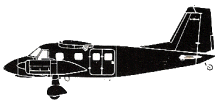Incident Overview

Description
BEA Viscount G-AOHP took off from London carrying a cargo of mail, freight and newspapers to Copenhagen. The aircraft climbed to FL210 and continued to Copenhagen. At 03:27 the crew were cleared to descend to 7000 feet and later to 3500 feet. At 4000 feet the Viscount descended through a layer of stratus clouds, so the propeller de-icing was switched on. At 03:46 the aircraft had to hold at the Bella Beacon to wait for another aircraft to land. At 03:51 Copenhagen Control told the crew that they could expect further clearance in 3 minutes. Initial approach drills were completed and the gear lowered; after 3 minutes the captain started to make a procedure turn to the northwest in order to join the ILS. At 03:57 the aircraft was on the right-hand procedure turn when the captain switched on the airframe de-icing system. Immediately thereafter the left current flow warning light came on, together with the central warning light and the aircraft swung to the left. The no. 1 engine rpm and jet pipe temperature were falling and a fire drill was carried out on that engine. The aircraft was straightened and no. 2, 3 and 4 engines set to full power. The Viscount started to lose height rapidly now and the captain retracted gear and flaps. Turning to the right to regain ILS caused the aircraft to enter a 45deg bank turn with 135 knots and a high rate of descent. The crew then found out the no. 3 and 4 engines had also failed. The props were feathered as the aircraft descended at a rate of 600 feet/min. An emergency gear and flaps-up landing was carried out some 14 miles NW of the Copenhagen Airport. PROBABLE CAUSE: “The cause of the engine failures, which brought about the accident, lay in the accumulation of ice on the engine cowlings which, because of malfunctioning of the de-icing system, was allowed to build up before being dislodged. Passage of the lumps of ice through the engines caused partial flame out, which produced sufficient loss of power to initiate the auto-feathering and thus to stop the engines.”
Primary Cause
Ice accumulation on the engine cowlings caused partial flame-out, leading to auto-feathering and engine shutdown.Ice accumulation on the engine cowlings caused partial flame-out, leading to auto-feathering and engine shutdown.Share on:





